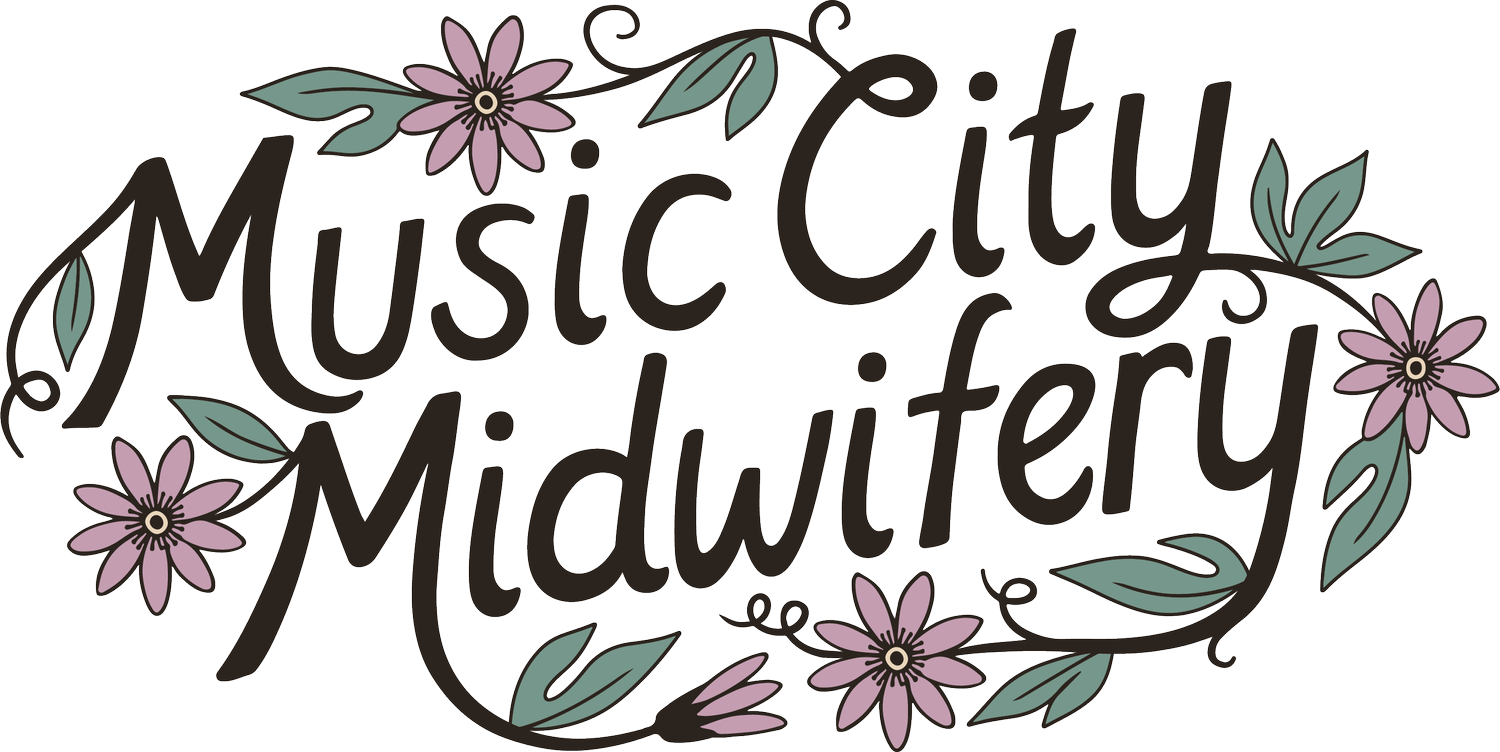Water It!
By Gaylea McDougal
Pregnancy is a season of growing. And like anything that grows, you need water. Not just in your glass, but in your bath, your breath and your environment.
As midwives, we’ve seen firsthand how powerful water can be. It softens, soothes, strengthens. It literally supports life from the inside out.
Let’s talk about how to water it ALL.
🫗 Drink the Water
Growing a baby is thirsty work. During pregnancy, your blood volume increases by up to 50%, and every drop of it relies on hydration [1]. This is especially true entering into the 28th week or the third trimester. This is the time of peak blood expansion. The body is working extra hard to prepare for the impending challenge of quick blood and body fluid shifts after delivery.
Benefits of drinking water during pregnancy:
Reduces swelling and supports healthy amniotic fluid levels [2]
Helps prevent dehydration-related contractions (which can mimic preterm labor) [3]
Aids digestion and reduces constipation [4]
Supports kidney function and lowers the risk of UTIs [5]
Boosts energy and reduces fatigue
Carries vital nutrients to your baby [6]
Our goal recommendation for water intake is ½ your body weight in ounces per day—more if it’s very hot, cold or you’re exercising that day. Add electrolytes especially if you are increasing your water intake drastically so you don’t dilute your natural occurring electrolytes and trace minerals.
REMEMBER: This isn’t about perfection—it’s about mindfulness: your baby drinks what you drink.
🛁 Labor in Water, Heal in Water
Water isn’t just for drinking—it’s a valuable tool in your prenatal, birth and postpartum toolkit.
Prenatal:
Warm water combined with 2 cups of Epsom Salt can be a very effective smooth muscle relaxer. This can help alleviate back pain, leg cramps, Braxton Hicks contractions and aid with relaxation [7].
Getting into a warm bath can give many expecting mothers a place to “get away” and to have some private time for reflection and privacy.
In labor:
Warm water reduces pain, lowers blood pressure, and encourages relaxation [7].
Water immersion (at the right stage) can shorten labor and increase comfort [8].
For many, the tub becomes a sanctuary—a place of surrender and strength.
Delivering in the water is often reported to feel gentler and more peaceful.
After birth:
Herbal sitz baths promote perineal healing, hemorrhoid comfort and reduce swelling [9].
Warm baths or showers ease muscle tension and support hormonal balance.
Gentle hydrotherapy stimulates the lymphatic system, improves circulation and eases physical recovery.
Water offers pain relief without pharmaceuticals, which is an important consideration for many people looking for comfort without side effects.
🌊 Get Near the Water
There’s something healing about standing by a creek, staring at the ocean, sitting in a bath, or listening to rain. Being near water seems to make everything feel softer.
Your baby is floating in fluid right now, rocked by your movements, calmed by your breath.
Being near water:
Reduces stress hormones and boosts serotonin [10]
Encourages mindfulness and emotional balance
Reminds you to react with openness (try holding water in your hands as a practice).
Connects you to something bigger, slower, and ancient
Even a foot soak, a walk by a pond, or a warm compress across your shoulders or forehead can be extremely beneficial.
Water doesn’t just support birth—it supports becoming.
🌱 All Life Needs Water
Babies need water. Adults need water. Plants, dreams, nervous systems—they all need watering.
Sometimes, what needs watering isn’t just your physical body. Maybe it’s your courage, your boundaries, your belief in your ability to give birth and be a compassionate parent.
Whatever it is, water it. Gently. Consistently. With love.
💙 At Music City Midwifery, we believe in water birth, water healing, water play and the wisdom of water.
So today, we invite you to pause and ask:
What needs watering in me right now?
Then drink the water. Run the bath. Step into the river. Play in the rain.
Let the water hold you, move you and teach you.
📚 Sources:
Institute of Medicine. Dietary Reference Intakes for Water, Potassium, Sodium, Chloride, and Sulfate. (2005)
American Pregnancy Association. Hydration During Pregnancy.
Mayo Clinic. Dehydration During Pregnancy: What You Should Know.
Cleveland Clinic. Constipation in Pregnancy.
ACOG. Urinary Tract Infections During Pregnancy.
CDC. Nutrition During Pregnancy.
Cluett, E. R., & Burns, E. (2009). Immersion in water in labour and birth. Cochrane Database of Systematic Reviews.
Nutter, E., et al. (2014). Waterbirth and the risks of drowning the baby. British Journal of Midwifery.
National Library of Medicine. Effect of warm sitz bath on episiotomy wound healing.
White, M., et al. (2010). Blue space: the importance of water for human health and well-being. Environmental Psychology.

